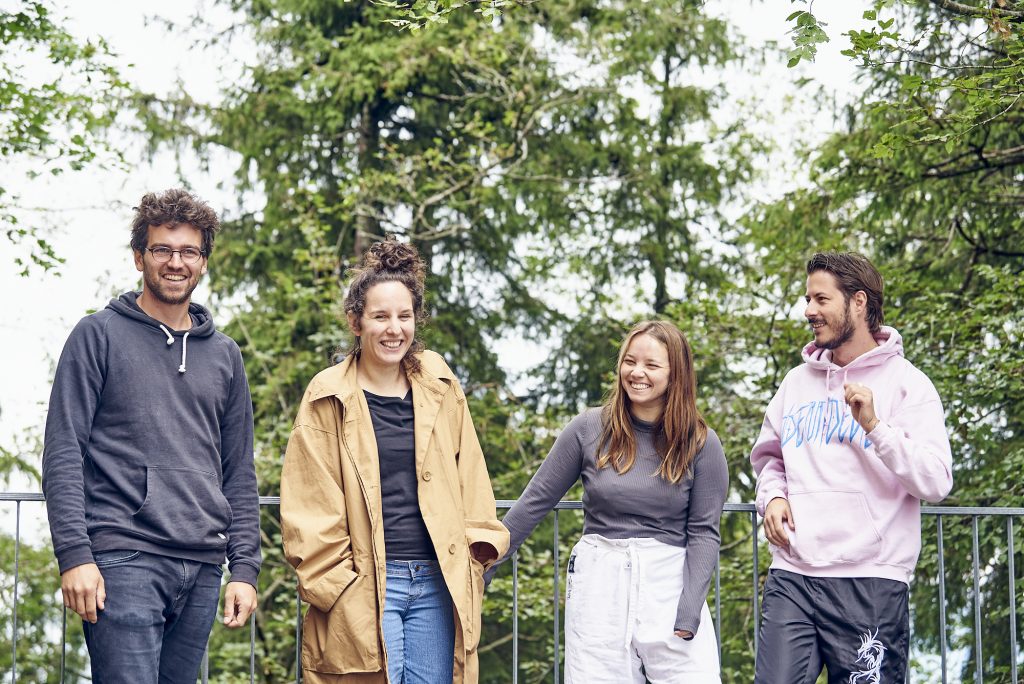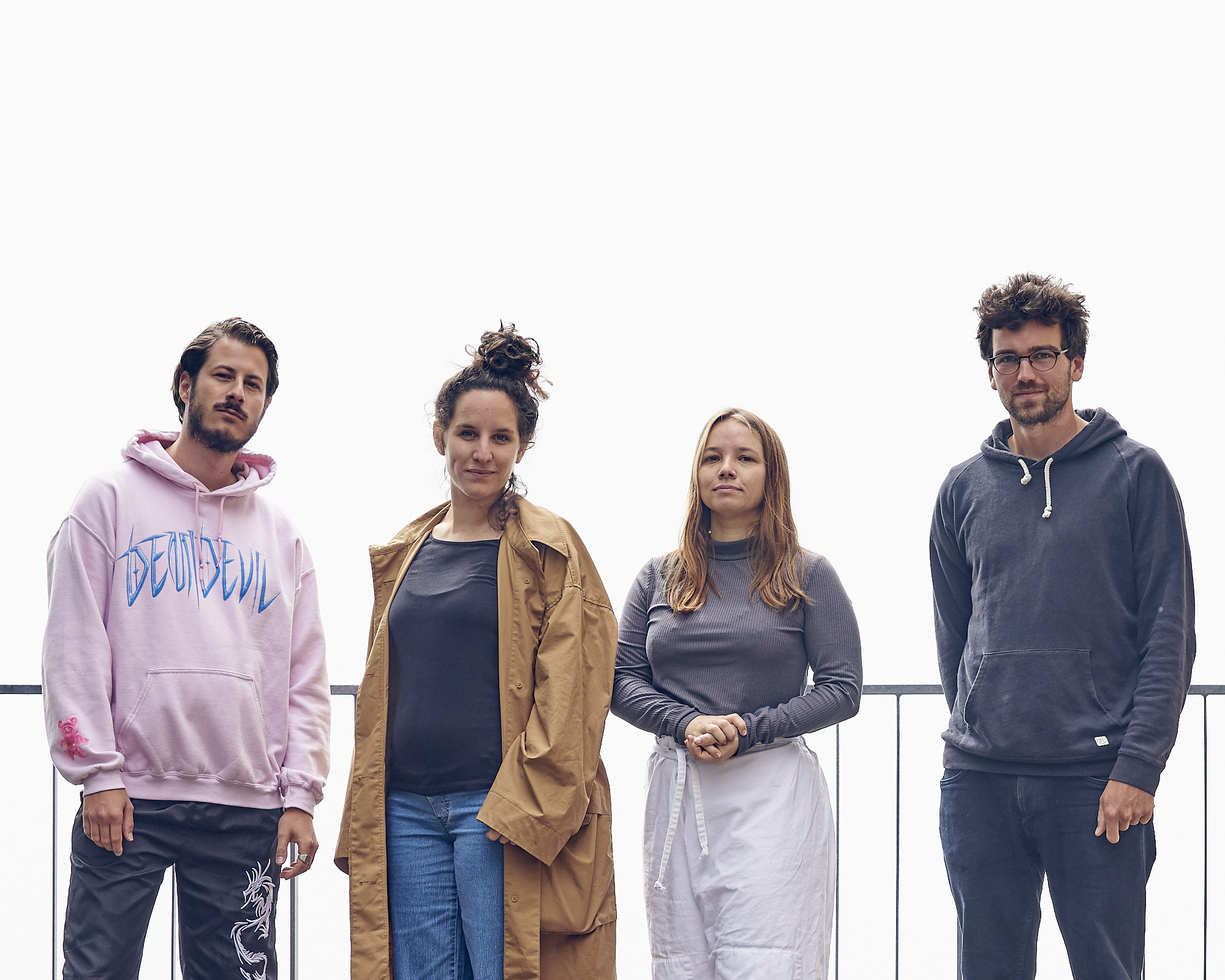DOGO
Generazione Critica interviewed DOGO – Residenz für Neue Kunst which is based in Lichtensteig in Switzerland. Hanes Sturzenegger (HS) and Marcel Hörler (MH), both co-directors of DOGO, told us about their project and the methodologies with which they carry out their programming.
GENERAZIONE CRITICA: DOGO was born in 2019 in the town hall of the Swiss city of Lichtensteig. From its origins it therefore has a strong link with the city. How was your project born and how did it integrate with the city? How did you build a network of partners and supporters?
Hanes Sturzenegger: We started out with yearly exhibitions across the valley of Toggenburg under the name of Arthur Junior. In this project we invited artists to come by, and work one month ahead of an exhibition to produce site specific works. This is also where we practiced our art mediation skills with school classes. After 7 years we wanted to focus on one area and intensify our project by inviting artists to stay for longer periods of time. With this idea we approached the mayor of Lichtensteig. He welcomed us with open arms and offered us several options of which we couldn’t resist the amazing town house in the center of the city. We approached the city in the right time, as they started a big participatory development to fight the growing rural depopulation. Maura and Sirkka of Dogo had support from the municipality to form the Rathaus für Kultur (town hall for culture). The Rathaus für Kultur does a lot from organizing concerts, events with other associations, renting out studios and networking in the culture scene of the region. Another important project in the house is the cafe that facilitates exchange. On the other hand, Dogo relies on a network that’s wide and maybe more international than that of the Rathaus für Kultur. We maintain collaborations with the Art University in Lucerne, Resartis, Klangwelt Toggenburg, IG Tanz Ost and artists from all over the world. Therefore we have the privilege to be integrated in a broader vision for the valley and fill a gap in the culture scene.
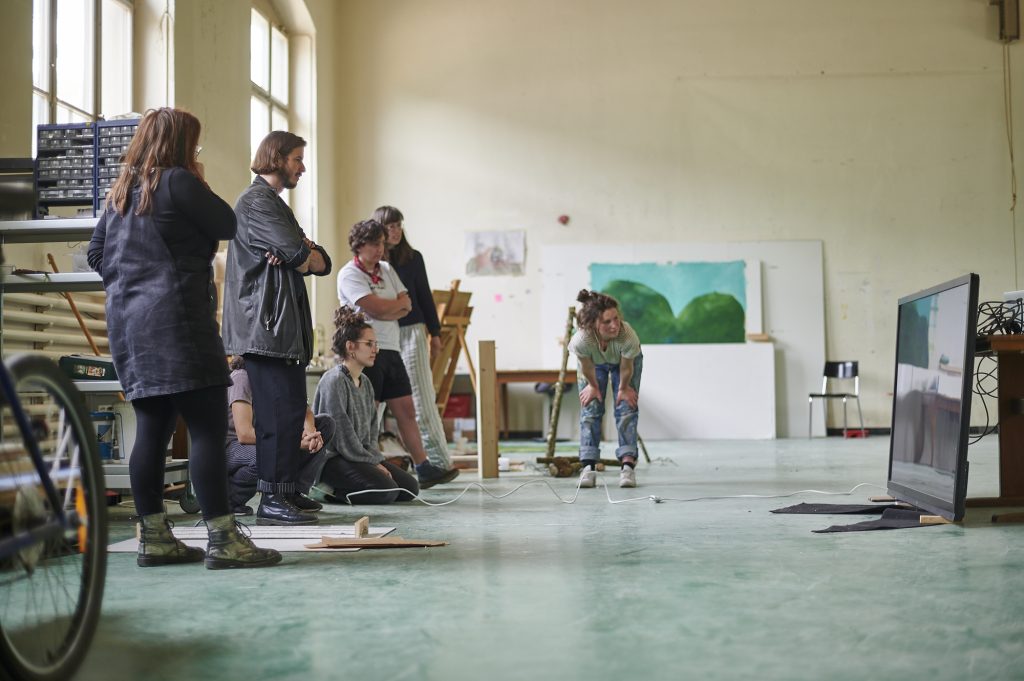
Dogo Studio
GC: An essential element of DOGO is the place, its being peripheral compared to traditional research and production centers of contemporary art (like Berlin, London, NY…), how to interpret this dimension more of a community than a metropolis and how does this affect your programming?
HS: Lichtensteig is an easy city to arrive in. Within half an hour you’ve seen most corners and in little time you meet many people. To create a dialogue about artistic practices, we have to reach out to people outside of the artscene too. So good communication skills, a clear vision and courage help to develop one’s practice on site. In open calls we make sure that artists not just want to get out of their metropoles to get some fresh air but that they want to come to Lichtensteig for unique reasons.
Marcel Hörler: After many years of working in a peripheral context, I’m more and more convinced that the work you have to do to be accepted in a community, in a neighborhood, does not so much depend on the categories like “peripheral” or “urban”. As a curator, cultural mediator, host, facilitator (you name it) you always need to provoke contact zones that need to be cultivated if you care about growing a network of allies. In February this year we co-hosted an exchange of artist residencies and I remember that Curdin Tones, initiator of Somalgors74, a cultural initiative in Tschlin, that lies in an alpine setting in the east of Switzerland, just at the border to Austria and Italy, dropped a term, which I think is strongly connected to this practice I’m talking about: mutual commitment. Mutual commitment in terms of selecting the artists and then by not taking the people in your neighborhood for granted. That’s why for us as an art association the collaboration with the Rathaus für Kultur, as a hub for cultural creation with a bar/bistro where the community can meet, is more than just a nice to have…
GC: If you had the opportunity to replicate the experience and skills you deploy at DOGO in another city or country, where would you choose to go?
HS: That’s a really hard question as we adapted so much to the local situation. To keep in touch with our partners we’d have to stay in the broader region of the east of Switzerland. And to build a new project, language is key which limits us to German, English or maybe French speaking places. But why not jump into existing projects? We can imagine helping out at projects of friends for some time like Sasso Residency, Cima Citta, La Dépendence, Somalgors 74, Nairs, Casa di Rosa, Studio Hütte, Klangwelt Toggenburg, IG Tanz Ost, Villekulla, La Becque, Sitterwerk, or the residency program of the canton St.Gallen.
MH: The problem is, that we can not replicate our experiences because we are still human beings with a certain amount of time on an infected planet but maybe we can share our knowledge that we extracted from our experiences. At the end of the day, even if there would be a second Lichtensteig with the exact same conditions, there will still be us and our emotional wellbeing that play a crucial role to handle a project like Dogo. Of course, an organization is always evolving and can grow, the only question is who does it and by what means.
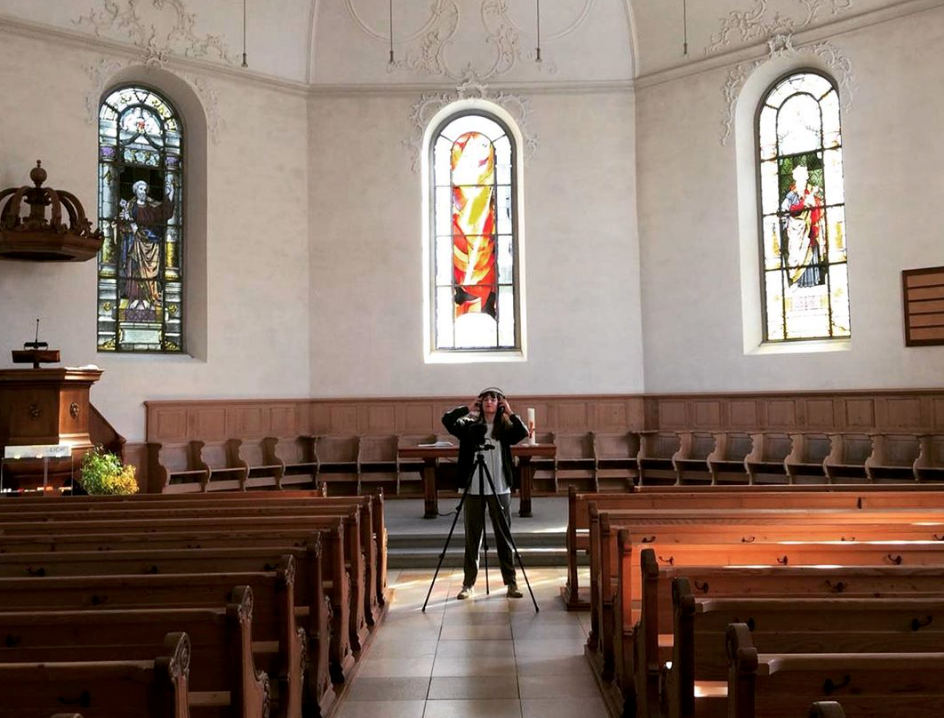
Sarah Fastrè & Emmie McSwell, Se Gonfle, 2019
GC: Your goal is to promote the development and research of art especially in relation to the younger expressions of contemporary art. Who mainly participates in the residencies, Swiss, European or even non-European artists? How do you do the selection?
HS: We form a jury of four, based on our future plans. There’s two of Dogo and two external cultural practitioners. As we wanted to invite only collectives in 2023, we asked two artists that have an elaborated collective practice to help us with the selection. We usually invite half of the artists from Switzerland as future collaborations with the artists are important to us and there’s extra funding for projects with local artists. The other artists could be from anywhere and of all artistic fields.
MH: We select the artists due to a set of criterias like artistic relevance or political, social urgency. We mostly ask some questions regarding the specific yearly call. Being part of a jury is always a moment of intensive trading which ultimately depends on the arguments that are given. Regarding the needs in the cultural sector for space and time to carry out one’s practice, each year, like many other residencies, we could host many more cultural practitioners than we actually have resources for. That is, of course, also a position of power and a power game that we have to play responsibly. We always need to self-critically reflect how we as an organisation with certain excluding mechanisms can develop.
GC: The residence is the central point of your project: hosting artists and letting them work in your environment and above all putting them in dialogue with each other. How much does your coordination affect the individual residency experiences? Can you tell us a couple of happy and satisfying experiences for you organizers and for the artists?
HS: This years theme is “Home”. So we form a lot of questions about arriving, shaping a home, housekeeping and where home is for an individual practice in this years Dogo Talks. Shaping a home for a short period of time for the artists is a lot of work. We’ve been trying to shape this care work since we’ve started the residency. Rituals and a clear structure can help the artists feel welcome and facilitate their artistic process. It’s very nice to see how former artists keep in touch long after they’ve visited the residency. For example Björn Heyn started an exhibition project to which he invited Piero Good several times. One artist, Silke kleine Kalvelage, liked Lichtensteig and the community so much, that she moved here a year after her residency. She’s now an important person for artists to turn to in town and makes the artists feel home outside of the project, even more since she has her studio in the Rathaus für Kultur.
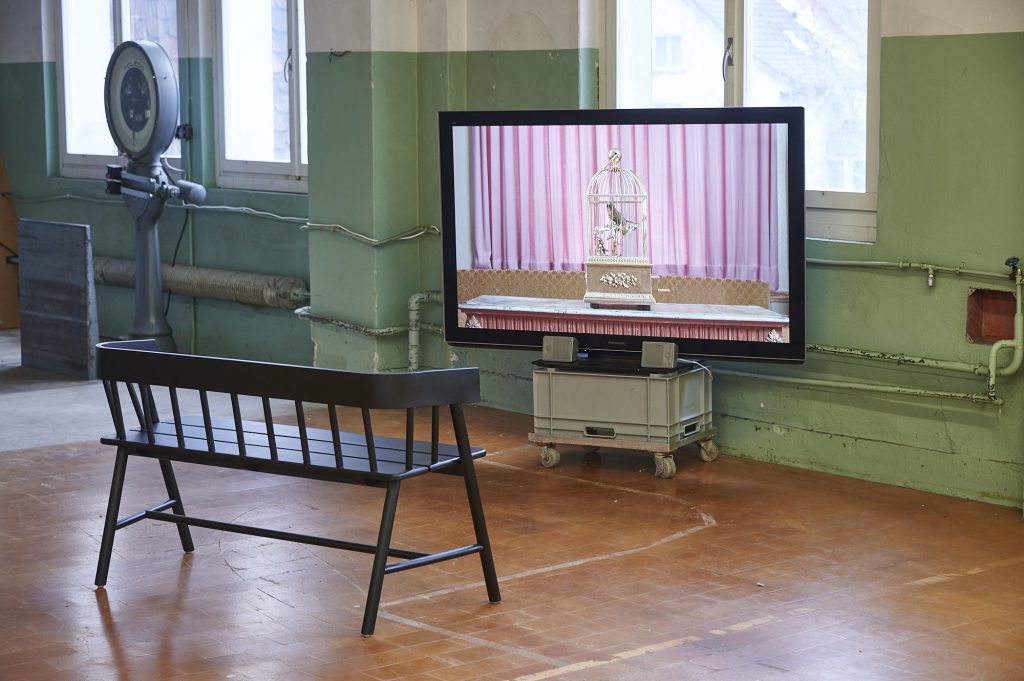
Tom K Kemp, Irreducible, 2021
GC: Each year you have a specific theme as your selection criterion, for the 2022/23 edition the theme is that of the collective. How are the themes selected and with what type, if any, of anchoring to the broader social, political and cultural issues of the contemporary world? What are the actions of restitution to the community (exhibitions, performances….) That you usually put in place? And what kind of feedback do you get?
HS: We see ourselves as a collective and have been working in more or less the same constitution for more than 12 years. Our skills in the team are as important as the skills we have individually and are the base for the project. Therefore we see a lot of value in collective practices. Individual proliferation is abundant in contemporary art, in contrast, we believe that art can shape our world with values like friendship, community and care, which are core to collective practices. Through the residency we can set the stage to collective practices easily, as the apartment, studio and events are commons all along.
As a residency, we have many guests bringing in new perspectives to Lichtensteig. We can share some of them in work presentations, performances and other events.
MH: To set a theme is also a risk because you set boundaries and determine in a way the creative processes. In a critical discussion with Jan Hofer, a former artist at Dogo I realized again, that it is tricky for me to not know what will be produced at the residency and to show the outcomes at the end of our season in an exhibition. Since I also pursue a curatorial, culture-mediation practice outside of Dogo I often try to make a mix of existing works and new works that are produced for an exhibition. In this way I can maintain a little security to underline a message that I want to transmit through an exhibition. In the context of Dogo I think that I need to step back a little because the conditions of the yearly exhibition depend so much on the processes that are made on site. The format of the exhibition is not necessary at the core of our residency and this makes it sometimes challenging for me (maybe it’s a déformation professionnelle).
GC: Looking at your online platform you can see how you take particular care in building and keeping alive your archive in which the experiences of the residences are reported. What are the cornerstones of this archive and how do you maintain and keep it active?
HS: The archive is a source of inspiration for artists applying to the residency. Each artist coming to the residency adds to this immaterial capital and shapes what Dogo is. Hearing artists talk about their work is catchy. With the video interviews, people can access the artistic practices at Dogo, those are done at the end of their stay. Then we document works and events to give an additional glimpse from the outside. Often the works are shown in the context of the exhibition at the end of the season.
GC: “Risiko” is the annual publication that contains the projects carried out during 2021 and the various contributions of the artists hosted at DOGO. How was the publication born and with what objectives did you create it?
HS: With the publication we hoped to reach a new public and start a dialogue on our yearly theme of Risk that was lost with the pandemics restrictions. We got a grant from the canton of St. Gallen to coordinate and commision contributions out of the Dogo network. Other than the countless events that had to be canceled on short notice, we could be sure we have not to work in vain for this project. Overall it was satisfying to dive into this new format and to be holding a book after working hard on the process.
MH: Yeah, a publication is a quite pandemic-resistant medium. So for us it was a learning process to figure out what it really needs to make a paperback consisting of 160 pages, with different contributions like interviews, images, reports or essays.
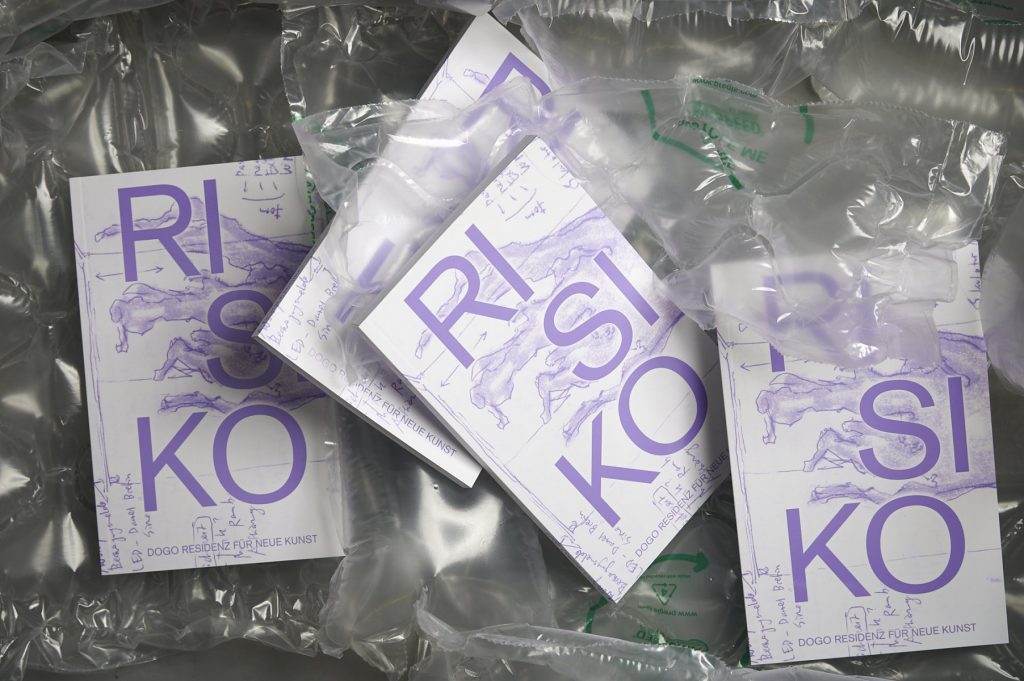
GC: Sustainability is a key word of these early years of the 21st century, which has to do with respect and awareness. Both theoretical and practical research in the field of visual arts presents several critical issues on this front, which have certainly been exacerbated by the pandemic condition. What strategies have you put in place and what of the experiences do you collect for the future?
MH: Sustainability is also a term that does not end at the mission statement or any organizational policy documents. It must always be translated into practice. For us, sustainability begins with the selection of artists. Who do we want to have with us? How can the selected artists offer added value to Dogo? From where do the artists travel? How can we use our resources sparingly? These are all questions that concern us and that we try to manage in the selection process or in contracts. Especially the travel of artists or the financial support regarding production and living for the artists are recurring topics. Very often, they are also questions linked to very specific tasks, involving the use of materials. In the last annual exhibition we used many meters of nets for the scenography. We borrowed the material from a construction company and returned it after the exhibition. Of course, this is only a small example, but nevertheless one that shows how important collaboration is here as well.
GC: How much have social networks and in any case the sharing of your projects influenced the development of DOGO? Do you pursue any particular strategy regarding this aspect?
MH: The social networks are indispensable and influence an important part in the work of Dogo. Be it with the channels where we share our calls, the selection of the jury members or the networking with local actors. The relationship does not end with the end of a stay. This to keep in mind is important for us but as every cultural practitioner knows, networking is labor and who is paying for it? In our team we have this running joke, asking which funding institution is paying for the next pizzas that we need for the gatherings with the artists. Digital tools play a role here, of course, but I would argue that the biggest work in networking is word-of-mouth and being present at events. This can sometimes be a bit unhealthy, because here in Switzerland we like Apéros a lot.
GC: What are DOGO’s next projects?
MH: Each season forms in a way a project for us. Now we are in the middle of the season and in November we will be at the end, and again at the beginning of a new cycle. In between there is our winter break. Maybe the next really big step for us in the near future will be the end of the pilot phase of the Rathaus für Kultur in 2024. The municipality is still the owner of the building, thus to organize the use of it in future will be a task which needs a lot of strategic negotiations. But until then, a lot will happen here and after all, we have to take care of our main task: running a residency and maintaining Dogo as home.
23/06/22
